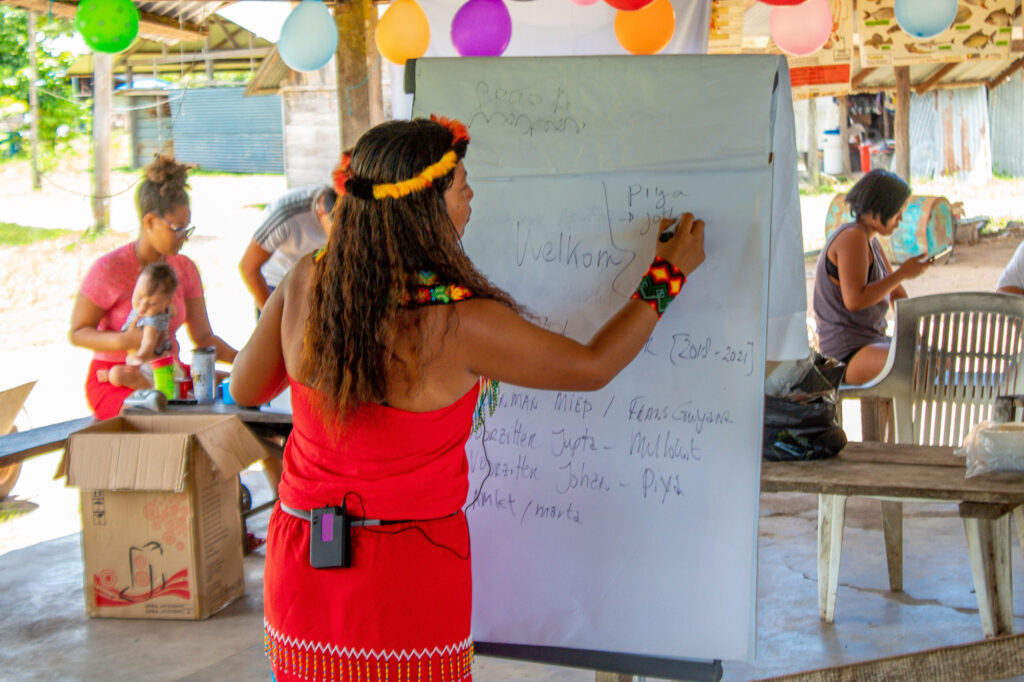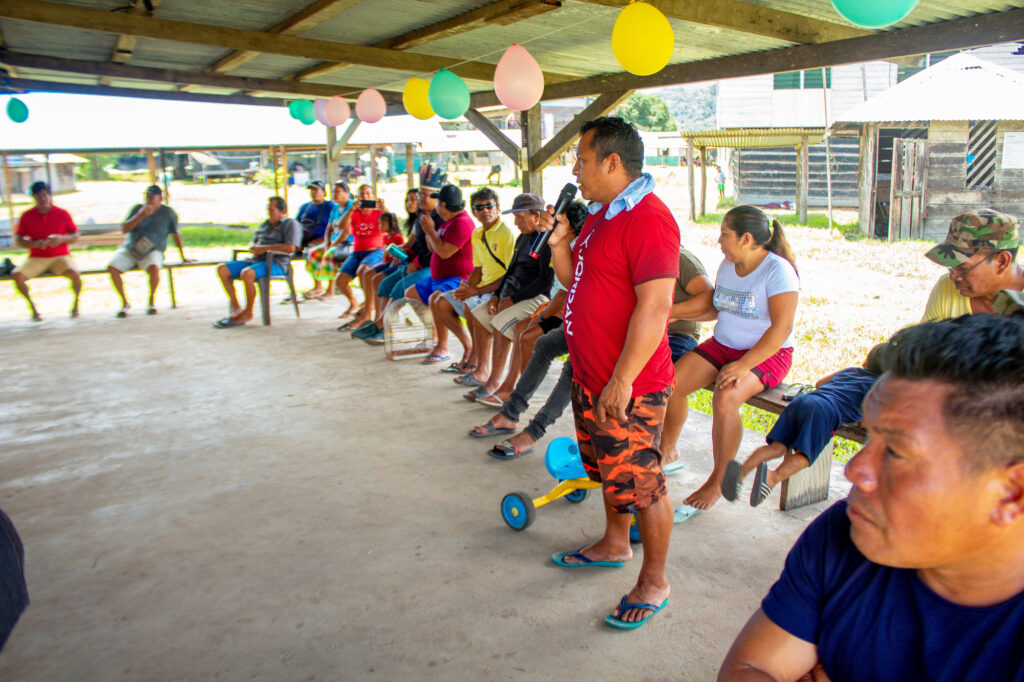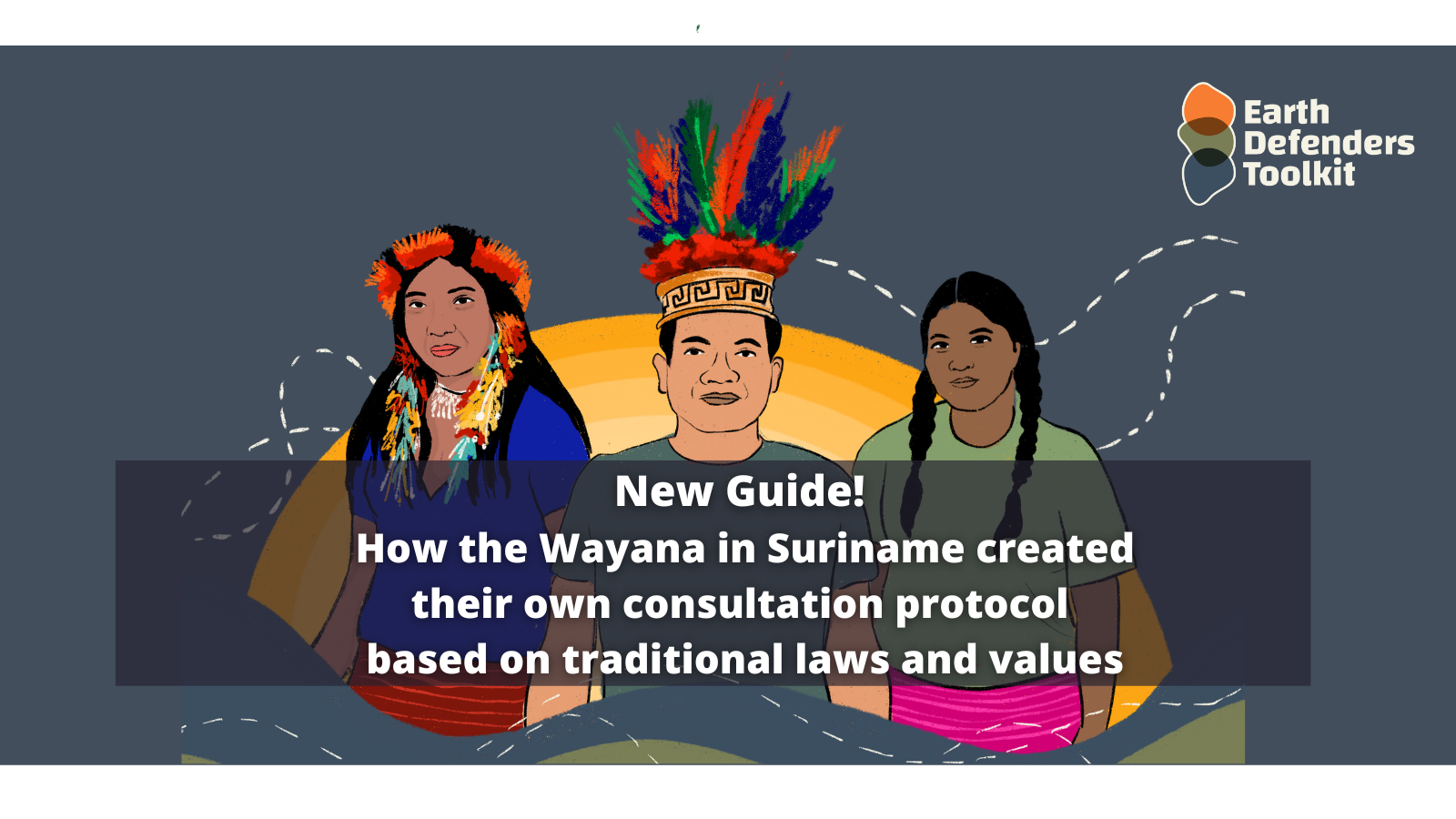Consultation protocols can take multiple shapes and implications when it comes to Indigenous Peoples and the government or NGOs that aim to collaborate with them in their territories. Having experienced harmful and extractive outcomes from protocols designed by outsiders, the Wayana People in Suriname created their own, which is grounded in their traditional practices and values. In collaboration with Wayana-led Mulokot Foundation, Nia Tero and Cultural Survival, we created this guide that contains key steps, learnings and advice for other communities seeking to compile their own consultation protocol.
Jupta Itoewaki is one of the community members who led the process. She is a young Wayana woman, mother, Earth defender and the chairperson of the Indigenous-led Mulokot Foundation. In May 2023, at the Earth Defenders Toolkit Gathering in Tena, Ecuador, Jupta presented the protocol with other 40 earth defenders from 11 countries and shared further insights through conversations.
“It is important to protect our people, our community, our leaders, and the decisions that we make. Many times, outsiders come to our community and ask ´Who is the leader of this community? ´and they want to talk to only that person, but almost everything in a community is done collectively because the land is not of one person: the river, the forest, the animals, it’s not owned by one person, is by the whole collective, the children, the grandmothers. It’s important to remind outsiders, that even if they talk to one person, that person does not have a mandate or the authority to decide for a whole group.”
There are about 800 Wayana in Suriname and about 2500 in total, through a territory that extends across the borders of that we now know as Brazil and French Guyana. Jupta is from Kawemhakan, a village of about a hundred people that she describes as “a hub” in the forest, where people from the capital go on and off to get to the goldmining fields. The local regular flights -rare elsewhere nearby- have become doors for governmental institutions and environmental organizations to enter the territory on the Northern Amazon region.

The idea of the protocol started a couple of years ago with the arrival of the Norwegian program REDD+ in Suriname and Guyana, focused on providing results-based payments for emission reductions of reforestation reduction. The program arrived (like many others) with environmental proposals and solutions centered on foreign terms of development and conservation. They agreed to collaborate, but the money stayed with the government and never got back to the community.
Around that time, Jupta met other Indigenous activists from territories in Africa and Southeast Asia who faced similar struggles with the same program. She also attended a meeting with the Wayana people on the Brazilian side of the colonial border and learned that her relatives were discussing a locally determined protocol to protect themselves from such kinds of struggles. So, she went back home, determined to start a process to create one with her community.
“That is what having your own protocol is really about: a tool to protect ourselves and decide our self-determination, instead of others deciding how they should engage with you. It took us one year to gather this information. It was not easy because people thought differently about how things should be done. We had to explain it, it was us making it, the community, not the government or NGO’s. That was new, the community creating a self-determined protocol to decide for ourselves what is going to happen.”

The local protocol is tied to a long journey of self-determination of the Wayana Peoples and informed through a process of learning from the community through specific spaces to hear from with Elders, women and youth. It is also informed by identifying the tendencies in which colonial logic often manifest in collaborations established under the terms of outsiders. These experiences are identified in the guide and turned into mechanisms to local terms around language, communication and rhythm in which decisions are made.
“People that are not from here are not used to getting a ´no´ from the community. They always think that if they inform the people, the people will say ´yes´. Sometimes when people don´t get a response, they think we did not understand what was said. What they don’t know is that the person is thinking, and not only for themselves but for their whole community. So, we need time to think. People visit for one hour and want you to make decisions, but that is not how it works. We want people to be mindful and respectful of how we make decisions, and how much time we take to do certain things. If you must deal with your donor, that should not be our problem, that is your problem.”
The protocol is not a closed door for potential collaborations with the Wayana Peoples in their territory. It is one that is open, with conditions that are informed by local decision-making processes, collective knowledge and rhythms. One that places the needs and well-being of the community and the land at the heart of decisions. And one which Jupta and the other members of the Mulokot team hope will inspire other Indigenous Peoples to create their own protocols.
The protocol design guide is now available in Wayana, English and Spanish. Check it out!

